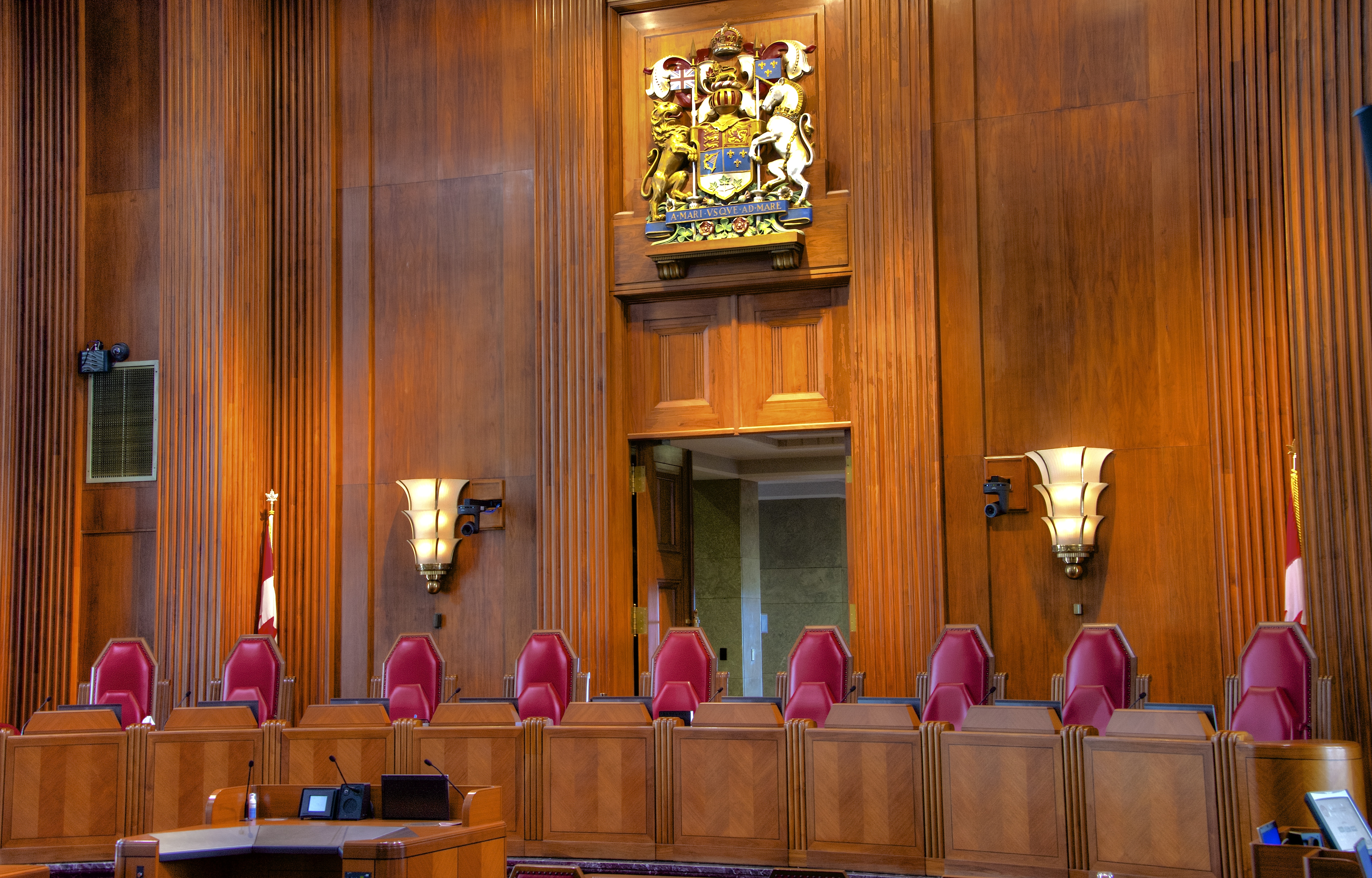
Nine empty seats of the Supreme Court of Canada
Imagine you’ve spent decades building your career. Finally, you are chosen from among your peers for the highest position in your field. Then, on your 75th birthday, you’re forced to retire. What would you do with yourself? Would you go quietly into retirement and spend time with your family? Would you start a job in a completely different field? Would you find a different way to continue the work you’ve done your whole life? These are the questions Canadian Supreme Court (SCC) justices must ask themselves when the reach the required age of retirement. An important consideration to their post-retirement choices is that, in Canadian legal culture, it is distasteful to fully remove the shroud of neutrality once one has been a judge. This post will take a look at why this is the practice in Canada and how retiring justices balance continuing their careers and maintaining their judicial personas.
Why Have Required Retirement?
Obviously, many justices are far from done contributing to the legal field when they reach the age of retirement. This begs the question: in this day and age, is mandatory retirement necessary? Arguably, there are several benefits to having mandatory retirement. Firstly, looking at the recent experience of our neighbors to the south with the death of US Supreme Court Justice Ruth Bader Ginsberg in 2020, lack of a mandatory retirement leads to uncertainty. Knowing when a justice’s retirement is coming up allows the government to begin appointment proceedings and allows the legal profession to prepare for a change in regime.
Mandatory retirement doesn’t guarantee certainty — a justice may die in office like Justice Sopinka or retire early like Justice Arbor — but it does provide a cushion for the public and the government. Because justices are appointed and not elected, the public doesn’t have a significant say in who is on the bench. However, a benefit of mandatory retirement is that, when a retirement is planned close to an election, voters have the opportunity to impact the bench with their vote for representatives. Perhaps the appointment of SCC justices isn’t usually front of mind for most voters. However, as the US saw after the decision in Dobbs v. Jackson Women’s Health (the case overruling the constitutional protection for abortion), unpopular court decisions can have an impact on the ballot box.
Then there is the issue of public confidence in the Court. One of the reasons for the introduction of the retirement age was Prime Minister Mackenzie King’s perception that, at 86 years of age, Justice Idington was mentally unfit for the job. Age does not inherently make a person mentally unfit, which is why most Canadian employers cannot force retirement at a particular age. However, this does not mean there isn’t a risk that the public will perceive an aging justice as declining in capability and public belief in the Court is essential to its functioning. While it is unfortunate that many justices must leave when they still have much to contribute, their continued pursuit of the profession outside of the Court arguably adds to the Court’s credibility. It is difficult to claim a justice made poor decisions because of their age when, after retiring, they go on to make significant contributions to Canadian and international law.
Rules of Retirement
Just like everyone else, there are many reasons that may lead a justice to decide it’s time to retire. Their health may be declining, they may be presented with new opportunities, or they may simply want to stop working and spend time with their families. Unlike most people, however, SCC justice must retire when they reach 75 years of age. When the Court was first created in 1875 justices were presumed to have lifelong tenure, subject to removal for not maintaining good behaviour — although many still retired before the modern age limit. Then, in 1927, the Supreme Court Act was amended to include the age cap.
While required to retire from the Court, justices are free to continue their legal careers with some restrictions, which apply to all former members of the judiciary. The most limiting of these restrictions is that, excluding highly exceptional circumstances, a former justice should not appear as an advocate before any adjudicative bodies. Justices are also expected to maintain judicial confidentiality regarding cases they heard while on the bench and to refrain from exploiting their former position in marketing for their private practice.
Post-Court Life
Over the 150 years of the SCC, justices have done a wide variety of things in their post-court life. Particularly in the early days of the Court, many justices retired rather early — one as early as seven months into his tenure — to take other positions developing the country. For example, Justice Killam left at age 56 to be Chief Commissioner of the Board of Railway Commissioners and Justice Fitzpatrick left at age 61 to become Lieutenant-Governor of Québec.
Notably, before 1949, the SCC was not the highest court for Canadian cases and cases could still be appealed to Judicial Committee of the Privy Council. Following this change, many more justices stayed on the Court until on-or-about the retirement age, but not always. For example, Justice Arbor left in 2004 at the age of 57 after only five years on the Court to continue her work in international law as the United Nations High Commissioner for Human Rights.
The most common course for retired justices is to rejoin private practice at large, national law firms. The titles former justices hold at these firms range from “Of Counsel” to “Jurist in Residence.” Other common retirement posts include continuing academic research and teaching at law schools and consulting for the government. Although they have to retire from the bench, many SCC justices choose to spend their “retirement” continuing to follow their calling to the legal profession.

